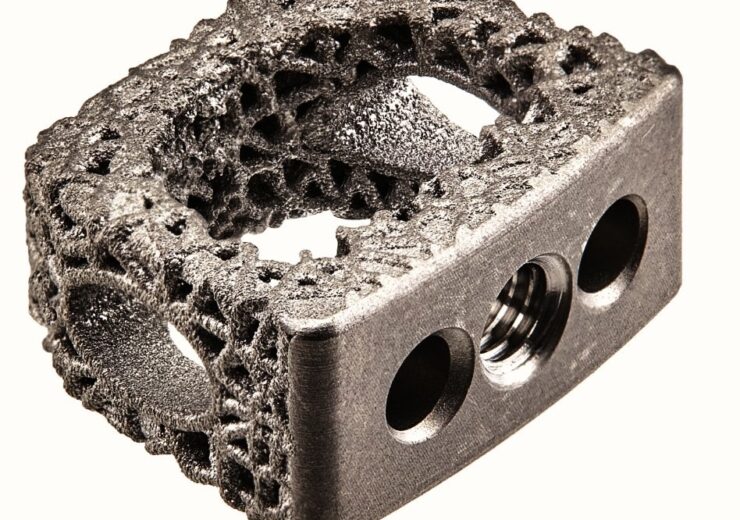Flux-C is a porous titanium device that is designed with a large graft window and a side window to allow for improved radiographic imaging

Flux-C 3D printed porous titanium cervical interbody device. (Credit: PRNewswire/ ulrich medical USA)
Medical device firm ulrich medical USA has secured US Food and Drug Administration (FDA) 510(k) clearance for its Flux-C 3D printed porous titanium cervical interbody device.
According to the firm, Flux-C is developed using a 3D printing process called direct metal laser sintering (DMLS). The interbodies come in a variety of parallel and lordotic choices and heights.
ulrich Medical USA Surgeon Advisory Board’s newest member Patrick Maloney said: “Surgeons have many options for cervical interbodies.
“The Flux-C porous titanium device offers one of the best in class with superior endplate contact and spaces for generous inter-device bone grafting. It is a welcomed complement to their superior array of expandable cages.”
The company said that the porous titanium devices are designed with a large graft window and a side window to allow for improved radiographic imaging.
ulrich Medical USA Technology states director Eric Lucas said: “We are continuing to develop procedural solutions for reconstruction of all spinal pathologies in collaboration with our Surgeon Advisory Board.
“We strive to help our surgeons and distributors achieve New Heights and Beyond with integrity, through excellence in design, manufacturing and craftsmanship.”
With global headquarters in Ulm, Germany, the company develops and commercialises musculoskeletal implant technologies in the US.
In July 2020, ulrich medical USA expanded its product portfolio with the market release of the Momentum posterior spinal fixation system.
The Momentum system is intended to enable surgical constructs for bridging from the sacroiliac to the cervical spine.
